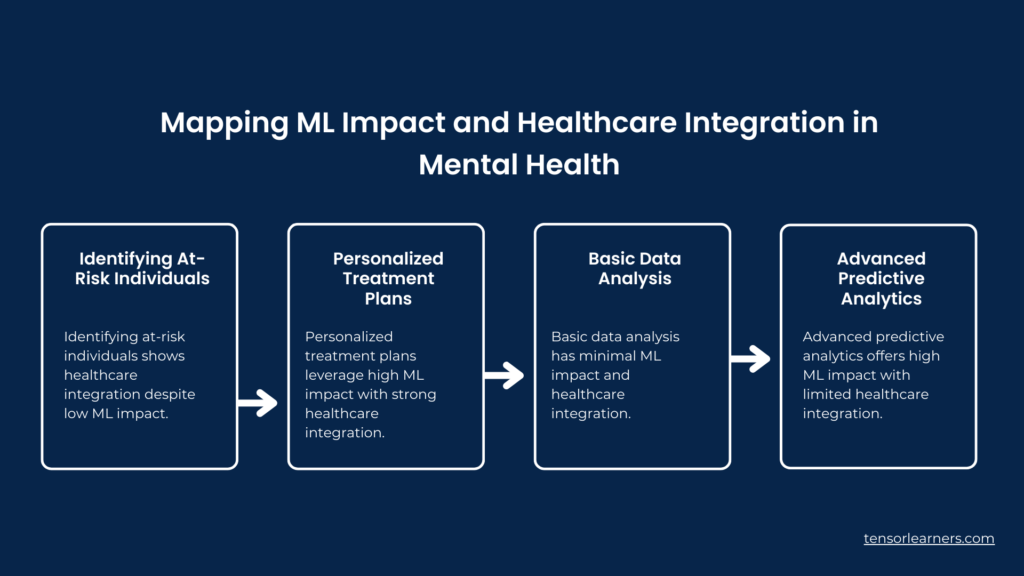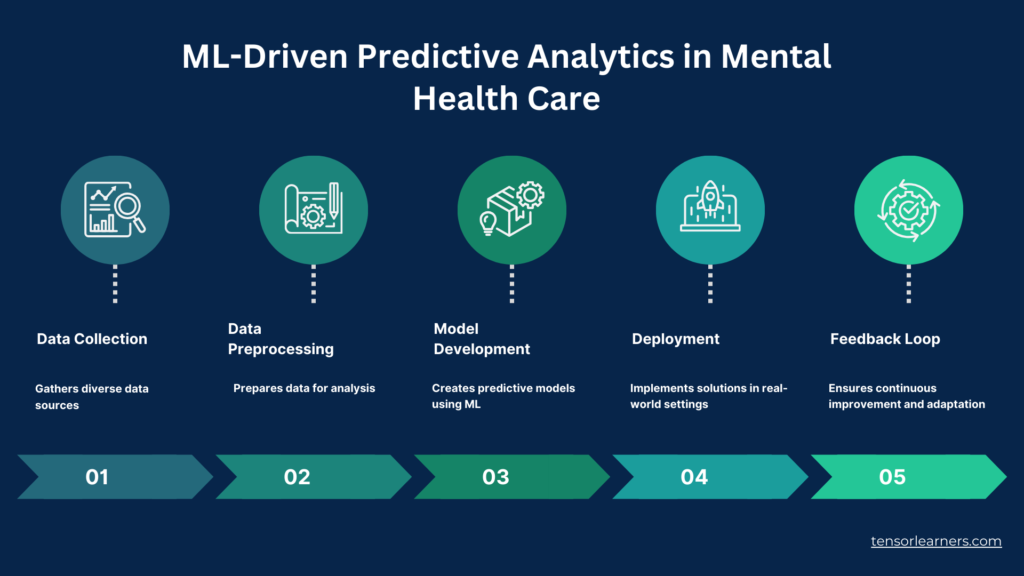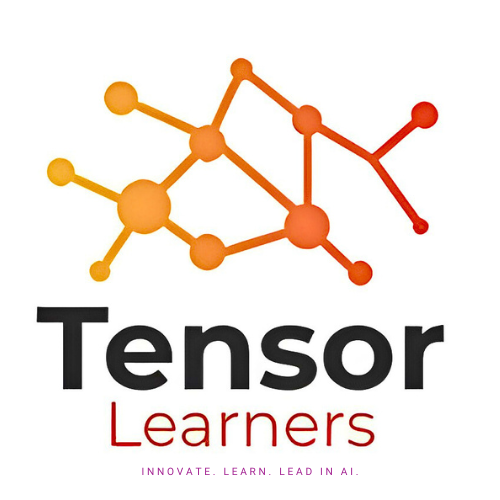ML-driven Predictive Analytics for Mental Health Interventions

Introduction
Mental health is a critical component of overall well-being, yet it remains one of the most underserved areas in healthcare. With the rise of machine learning (ML) and predictive analytics, there is a growing opportunity to revolutionize mental health interventions. By leveraging data-driven insights, ML can help identify at-risk individuals, personalize treatment plans, and improve outcomes. In this blog, we explore how ML-driven predictive analytics is transforming mental health care and the challenges and opportunities it presents.
The Growing Need for Data-Driven Mental Health Solutions
The World Health Organisation (WHO) estimates that over 1 billion people worldwide suffer from mental health issues. Despite the prevalence, stigma, a lack of resources, and a lack of mental health specialists continue to hinder access to prompt and efficient care. Conventional methods frequently use reactive strategies, treating symptoms only after they appear.
A proactive substitute is provided by ML-powered predictive analytics. ML models can forecast mental health concerns by examining data trends, allowing for early intervention and individualised treatment. Reducing healthcare expenses, improving quality of life, and saving lives are all possible outcomes of this change from reactive to proactive care.
How ML-Driven Predictive Analytics Works in Mental Health
ML-driven predictive analytics involves the use of algorithms to analyze large datasets and identify patterns that can predict future outcomes. In mental health, these datasets may include:
Key Applications of ML in Mental Health
i. Risk Prediction and Early Intervention
ML models can detect people who are at risk of mental health issues like depression, anxiety, or suicidal thoughts by analysing both past and current data. Natural language processing (NLP), for instance, can identify indications of discomfort by analysing speech or text patterns.
ii. Personalized Treatment Plans
Doctors can use predictive analytics to customise therapies according to each patient’s particular needs. For example, machine learning algorithms can forecast a patient’s potential reaction to particular drugs or treatments, eliminating the need for trial-and-error methods.
iii. Monitoring and Relapse Prevention
Continuous data collection from wearable technology and smartphone apps allows ML models to track patients in real time. If the model finds indications of relapse, alerts can be sent, enabling prompt action.
iv. Resource Allocation and Policy Making
Policymakers can more efficiently allocate resources and identify high-risk populations with the aid of predictive analytics. Machine learning, for instance, can forecast which communities are most likely to see a spike in mental health problems during a crisis.
Case Studies: ML in Action
Suicide Risk Prediction: In order to accurately forecast the risk of suicide, researchers have created machine learning algorithms that examine data from social media and electronic health records. For instance, ML was utilised in a study that was published in JAMA Psychiatry to pinpoint important risk factors and forecast suicide behaviour with an accuracy of more than 80%.
Depression Detection via Wearables: Wearable technology is being investigated by companies like Apple and Fitbit to identify early indicators of depression. Machine learning algorithms can identify possible problems before they become more serious by examining heart rate, activity, and sleep patterns.
Chatbots for Mental Health Support: Woebot and Wysa, two AI-powered chatbots, use natural language processing (NLP) to offer instant mental health care. By analysing user input, these tools can provide tailored coping mechanisms and, if required, refer situations to human experts.
Architectural Aspects
Dissecting the system architecture helps to clarify how ML-driven predictive analytics actually operates. Five main layers usually make up the architecture: data collection, data preprocessing, model development, deployment, and feedback loop. Every layer is essential to guaranteeing the efficacy and scalability of the system.

Challenges and Ethical Considerations
ML-driven predictive analytics has a lot of potential, but it also presents a number of challenges:
The Future of ML in Mental Health
Predictive analytics powered by machine learning has a promising future in mental health. Even more precise and individualised solutions will be possible because to developments in AI and growing data availability. Important trends to keep an eye on are:
Conclusion
Predictive analytics powered by machine learning has the potential to revolutionise mental health care by facilitating ongoing monitoring, individualised therapy, and early intervention. Even though there are still obstacles to overcome, the possible advantages greatly exceed the hazards. We can use machine learning (ML) to improve mental health treatment in the future by addressing ethical issues and encouraging cooperation between technologists and doctors.
Prioritising openness, diversity, and patient-centered design is crucial as we proceed. By working together, we can create a future in which mental health services are proactive, predictive, and individualised in addition to being reactive.
